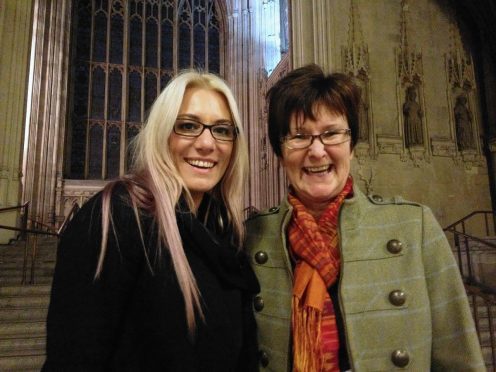Two women whose husbands are living with brain tumours have taken their campaign to raise awareness to the UK Parliament.
Caroline Critchlow, from Orkney, and Carolyn Toshney, from Aberdeen, travelled to London to share their stories with MPs on the new petitions committee.
It is investigating the subject of funding for brain tumour research after an e-petition calling for increased investment reached more than 14,000 signatures.
Started by Maria Lester, whose brother Stephen was diagnosed with a brain tumour at just 19 and died aged 26, more than 30,000 people have now added their names in support.
Ms Critchlow, 55, who founded Friends of the Neuro Ward – Aberdeen Royal Infirmary (FNWA), and the group’s vice-chairwoman Ms Toshney, 37, were among a number of people chosen to give evidence which will inform a report to be presented to ministers.
The pair have ambitions to transform it into the centre of neuroscience for the north-east, starting by raising £1million to buy the first intraoperative MRI scanner in Scotland.
It allows surgeons to look at a mass while they operate so they know before they close up whether any more can be removed.
Ms Critchlow’s husband Kevin, now 52, was successfully operated on at the hospital, but 10% of his non-cancerous tumour remains in his brain.
He also has facial palsy, which means he cannot smile, is deaf in one ear and has a gold weight in one eye so he can see.
“I will never be able to kiss him again. Every time I look at him I see a brain tumour because he has changed so much,” said Ms Critchlow.
Ms Toshney’s husband Mark, 38, who had a grade three cancerous tumour, also underwent an operation at ARI and he too still carries round part of the growth.
She said their campaign was as much about raising awareness as money for better equipment and more staff, including the fact that non-cancerous tumours can still be life-threatening.
Brain tumours kill more children and adults under 40 than any other cancer and fewer than 20% of those diagnosed survive beyond five years.
But last year, brain tumours received just 1.5% of the £498million national spend on research into cancer.
